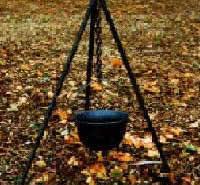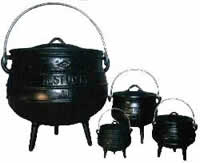History of Maple Sugaring

THE HISTORY OF THE MAPLE SYRUP MAKING PROCESS
This story was taken from The Maple Syrup Book by Helen and Scott Nearing:
"There is an Iroquois legend about the sap of the maple and how Woksis, the Indian chief, first tasted it as a sweet syrup because he had an ingenious wife. Woksis was going hunting one day early in March. He yanked his tomahawk from the tree where he had hurled it the night before, and went off for the day. The weather turned warm and the gash in the tree, a maple, dripped sap into a vessel that happened to stand close to the trunk. Woksis's wife, toward evening, needed water in which to boil their dinner. She saw the trough full of sap and thought that would save her a trip to get water. Anyway, she was a careful woman and didn't like to waste anything. She tasted it and found it good--a little sweet, but not bad. So she used it for cooking water. Woksis, when he came home from hunting, scented the inimitable maple aroma, and from far off knew that something especially good was stewing. The water had boiled down to syrup, which sweetened their meal with maple. So, says the legend, was the happy practice inaugurated"(p. 26-7).
Native Americans discovered how to collect sap or tree water from maple trees. In fact maple sugar comprised 12% of the diet of some Native American groups. The Algonquin term for maple sugar is Sinzibuckwud (drawn from the wood). The Native Americans caught the sap of the maple tree in a hollowed or carved-out log and cooked it by dropping hot rocks into the collected sap. The rocks were hot enough to boil the sap and make steam to remove the water.
The Native Americans and early pioneers made maple syrup in batches. The pioneers used iron kettles for boiling the sap. This eliminated some of the foreign materials from the Native American type of syrup, but both methods produced a dark, strongly flavored syrup. Farming families produced batches of syrup and sugar for their own use, but it soon became evident that there was a need for such products by neighbors who did not have access to maple trees.
In the mid-1800s, a “multiple kettle” method of boiling sap was employed. In the multiple kettle method, sap was transferred, by batch, through a series of kettles as the water in the sap evaporated. This decreased the amount of time needed for heating the sap. It also resulted in a lighter-colored syrup with a slightly better flavor.
Enclosed fireboxes and the use of partitioned pans came into use in the late 1800s. This increased fuel economy and decreased the boiling time even more. It also improved the color and flavor of the syrup.
The peak production year for syrup was 1860 (6.6 million gallons). The use of maple sugar was regarded as an act of protest during the Civil War in the United States. All of the cane sugar and most of the molasses was raised and produced in the Southern states. During the war and prior to the war, people in the North refused to use cane sugar. Northerners used maple sugar to sweeten their foods. Therefore, using maple sugar was a form of protest against the South.
The flue type evaporator was designed in the early 1900s. Again there was an increase in fuel economy and evaporation rate, thereby further increasing the quality of the syrup. By 1900, with the increased availability of cane sugar at relatively low costs, syrup production began to decrease as a commercial enterprise.

